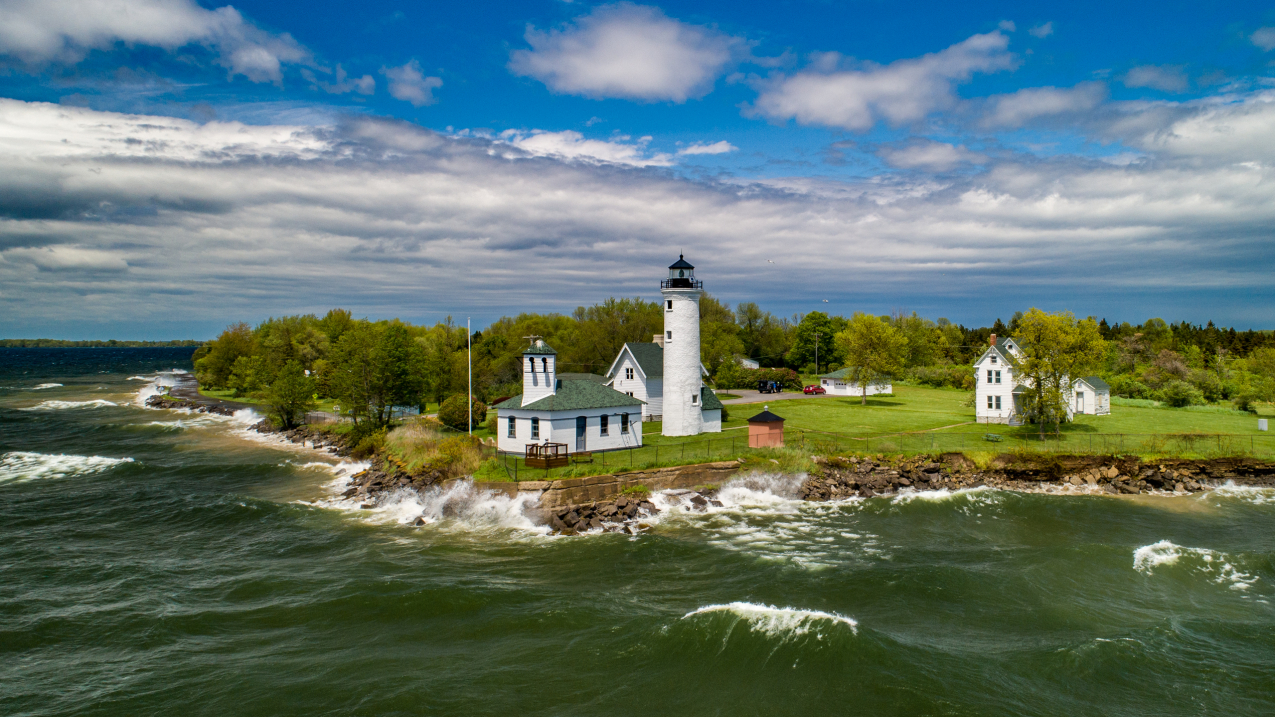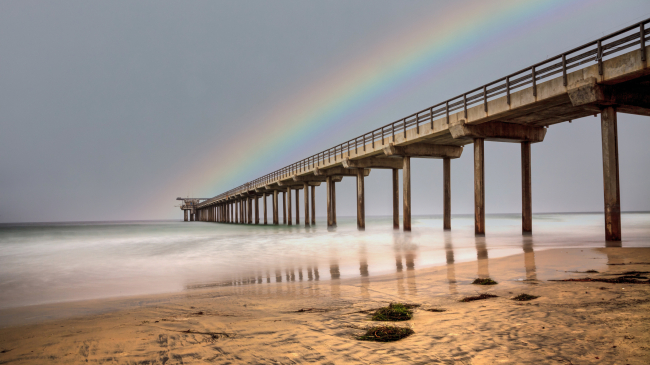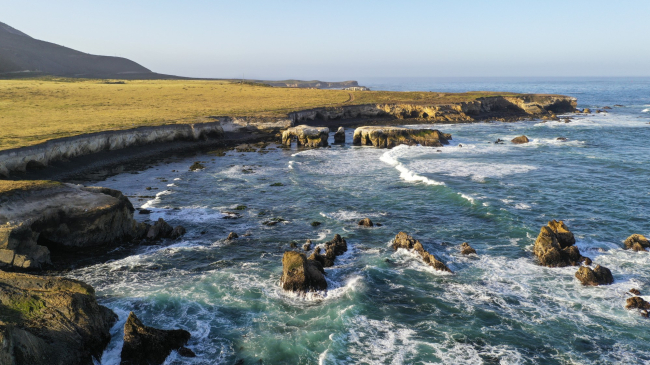Eastern Lake Ontario to become 16th marine sanctuary in iconic system of marine protected areas

An aerial view of historic Tibbetts Point Lighthouse in the Town of Cape Vincent in Jefferson County, New York. The lighthouse marks the point where Lake Ontario meets the St. Lawrence River and overlooks the eastern boundary of Lake Ontario National Marine Sanctuary. (Image credit: NOAA)
Today, the Biden-Harris Administration announced that it is designating a 1,722-square-mile area in eastern Lake Ontario as America's 16th national marine sanctuary. Lake Ontario National Marine Sanctuary 一adjacent to New York’s Jefferson, Oswego, Cayuga and Wayne counties 一 will celebrate the region’s maritime cultural history and provide new opportunities for research, education, recreation and maritime heritage-related tourism in local coastal communities and the broader Great Lakes region.
“President Biden is leading the most ambitious conservation agenda in history through the America the Beautiful initiative, and today’s marine sanctuary designation is another key milestone in that effort,” said White House Council on Environmental Quality Chair Brenda Mallory. “For generations to come, families will be able to learn about our nation’s maritime history and the rich cultural heritage of Lake Ontario.”
“Under the leadership of President Biden, there has been an unprecedented expansion in the sanctuary system across our nation and today’s announcement moves that mission forward,” said Deputy Commerce Secretary Don Graves. “Lake Ontario National Marine Sanctuary will help support locally led collaborative efforts and advance economic growth and conservation. Thanks to NOAA and the Biden-Harris Administration, current and future generations will experience this sanctuary and its maritime and cultural resources for all of us to promote, protect and preserve.”
The sanctuary designation advances President Biden’s America the Beautiful Initiative, which supports locally-led collaborative conservation efforts across the country for the benefit of all Americans and sets a national goal of protecting, conserving or restoring at least 30% of U.S. lands and waters by 2030. With more than 41 million acres already conserved, President Biden is on track to conserve more lands and waters than any president in history.
“The designation of this sanctuary is a milestone for NOAA, New York and the nation,” said NOAA Administrator Rick Spinrad, Ph.D. “Establishing a national marine sanctuary in the cold fresh waters of eastern Lake Ontario opens the door to world-class research and education initiatives, and provides opportunities to support and enhance tourism and the local economy within one of the most historically significant regions in the Great Lakes.”
Eastern Lake Ontario’s waters and coast tells the story of America’s diverse history and heritage, from early Indigenous settlements to today. The area includes transportation and trade routes for Indigenous Peoples and early European explorers, and locations of military conflicts and maritime innovation. Eastern Lake Ontario supported the growth of the young American republic and the nation’s industrial core.
The new sanctuary features an extraordinary collection of 41 known shipwrecks and one known submerged aircraft, among the best preserved in the world, discovered over decades by recreational scuba divers and shipwreck explorers. The shipwrecks, such as St. Peter, a three-masted schooner that was loaded with coal when it was lost in a storm in 1898, embody more than two centuries of the nation’s maritime history.
NOAA will use its expertise to further locate, research and monitor these and other maritime cultural resources. NOAA will also focus on education and outreach through partnerships with Indigenous governments, local partners and institutions.
“From sacred places and cultural practices to lighthouses and historic shipwrecks, this region’s maritime cultural legacy provides meaning and a sense of place to countless generations,” said Nicole R. LeBoeuf, director of NOAA’s National Ocean Service. “NOAA looks forward to working with a wide range of partners to learn, share and celebrate the remarkable history of the eastern Lake Ontario region.”
In January 2017, the adjacent counties and the City of Oswego, with support from the Governor of New York, submitted a sanctuary nomination for the area to NOAA. A diverse group of governments and non-governmental organizations, including the Onondaga Nation, regional and local units of government, historical societies, museums, recreation, conservation, tourism and education groups, endorsed the nomination.
“NOAA acknowledges and respects that eastern Lake Ontario is of cultural, spiritual and historical significance to the Nations of the Haudenosaunee Confederacy, who have been stewards of their homelands for thousands of years and continue to care for these lands and waters,” said John Armor, director of NOAA’s Office of National Marine Sanctuaries. “We are dedicated to building equitable partnerships with Indigenous Peoples in the stewardship of these waters.”
NOAA and the state of New York will co-manage the sanctuary, the third to be designated in the Great Lakes. The designation will take effect following 45 days of continuous session of the U.S. Congress after publication of this action in the Federal Register.
“Lake Ontario’s National Marine Sanctuary will send major waves throughout Upstate as the first-ever national marine sanctuary in New York waters. This designation will preserve Lake Ontario’s historic shipwrecks, boost tourism and protect our beautiful waterways for generations to come,” said Senator Schumer. “From Wayne to Cayuga to Oswego to Jefferson County, this designation will help our shoreline communities protect the beauty of this magnificent lake and drive interest on Lake Ontario’s rich history. I will always fight to increase economic, educational, and tourism opportunities for New York’s Great Lakes communities.”
“Lake Ontario has a rich maritime history, and the designation of this sanctuary will open the door to new opportunities in the region,” said Senator Gillibrand. “I am proud to see NOAA recognizing eastern Lake Ontario’s maritime cultural history and designating it as New York’s first national marine sanctuary. This designation is monumental for New York, and I look forward to seeing the new research, educational, and tourism opportunities created for the region.”
“The designation of the Lake Ontario National Marine Sanctuary will ensure long-term protection and proper management of our historic shipwrecks and maritime heritage sites in eastern Lake Ontario, off the coast of Oswego, Jefferson, Cayuga, and Wayne counties. This important designation will not only safeguard these valuable historic sites but also promote educational opportunities and support tourism in our community. The community is eager to have the necessary resources to protect these sites and continue educating future generations about our region's rich maritime history,” said Congresswoman Tenney.
NOAA and its local and state partners will host a community celebration for the new sanctuary on Friday, Sept. 6, at 11 a.m. EST. The event will take place at William S. Cahill Pier, 39 Lake Street, Oswego, New York. Visit the sanctuary's website during the coming months for more information about the event.
NOAA's Office of National Marine Sanctuaries serves as the trustee for a network of underwater parks encompassing more than 620,000 square miles of marine and Great Lakes waters. The network includes a system of 15 national marine sanctuaries and Papahānaumokuākea and Rose Atoll marine national monuments. The system works with diverse partners and stakeholders to promote responsible, sustainable ocean uses that ensure the health of our most valued ocean places.
Climate, weather, and water affect all life on our ocean planet. NOAA’s mission is to understand and predict our changing environment, from the deep sea to outer space, and to manage and conserve America’s coastal and marine resources.
Media contacts
Vernon Smith, vernon.smith@noaa.gov, (240) 638-6447
Kimberly Rodgers, kim.rodgers@noaa.gov, (771) 233-3988




